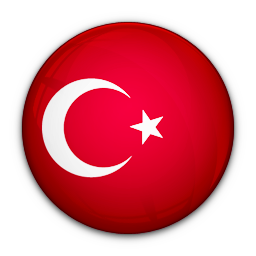What is Psoriasis?
Psoriasis affects about %27 of the world population, and it is also a chronic skin disease. It is a highly common disease in the community, and usually have a chronical course. As many chronic diseases, it exhibits an attribute for periodically recurrence. Incidence of reoccurred cases vary across individuals. Occasionally, psoriasis patients may live restfully for many years, without any complaints and symptoms of disease. Typical symptoms of psoriasis, which are the source for terming the disease, are silvery-white, thick, bright and dry scaly flaking located on a raised areas of rosy skin.
Psoriasis can involve all areas covered by skin tissue. It can affect the scalp, nails, hand, foot, trunk, knee, elbow, briefly; the whole body from head to toe. Severity of the involvement can vary from person to person. Moreover, while disease can be clinically appear as a single patch or multiple plaques across some patients, it can also affect large areas of skin by spreading to various areas of the body. Affected areas are mostly the knee, elbow, dorsum, scalp and genital area.
The characteristic clinical manifestation is white, thin plaques located on a red, well-shaped base; but psoriasis can also exhibit single red areas without plaques or inflamed, pinhead-sized pustules formed on those non-plaque, red bases. When the diagnosis made by only clinical observations, psoriasis can occacinally be confused with other allergic skin disorders such as; eczema.
What are the types of psoriasis?
Plaque psoriasis (psoriasis):
It is the most common type, and characterized by red, scaly plaques on the knee and elbow.
Inverse psoriasis:
Usually, it occurs on skinfolds such as; axilla, inguinal area, inframammary line. The differential diagnosis of psoriasis should be done in certain areas, considering the eczema. Once psoriasis affects axilla, inguinal area, tow-web, anal area and inframammary line; red, humid plaque formation will appear rather than the classical white-silver, scaly patches.
Guttate (eruptive) psoriasis:
This clinical form, which is common across particularly in children, presents by numerous droplet-like or coin-seized lesions.
Palmoplantar (palm, sole) psoriasis:
Psoriasis, which involve palm and sole, have two different types: Beforely, formation of lesions appear as red, scaly plaques, or secondly, formation of lesions appear as acne-like pustules on a red base. This clinical manifestation is called pustular psoriasis. Pustular psoriasis is highly persistent and can progress for many years.
Scalp psoriasis:
The involvement of scalp in psoriasis is quite common. It can affect only a small area on scalp or whole scalp, like skin involvement, and may cause excessive flaking like dandruff. Furthermore, hair follicles are not attached with each other. So, if they are pulled out, you can see that it is not a fatty crust. Although, psoriasis does not cause hair loss, it causes itching, fragile skin to bleeding and scalp dryness on affected areas.
Psoriatic nails, nail psoriasis:
Nail involvement may also occur in some patients. This clinical manifestation occurs in 10-78% of psoriasis patients. Nail psoriasis can accompany to other psoriatic lesions in the body, as it can be limited to just nails. If psoriasis affects nails alone and there is not any skin lesion, it is difficult to be diagnosed. Rate of fingernail involvement is 50% and toenail involvement is 35% in psoriasis. Pinhead-sized pits and thickening on nail, thick scaling under nail, separation of nail from the fold, yellow or brown discoloration on nail may occur. Among the trigger factors that intensify nail psoriasis are considered as; long nails, false nails, plucking the cuticle, removing the debris under the nail, irritants and fungal infections. Psoriatic nail is a compelling and refractory condition for both physicians and patients. Before initiating therapy, differential diagnosis of nail psoriasis from nail fungus should be performed.
Erythrodermic psoriasis:
It is a common and severe form of psoriasis which involves more than 80% of body surface. All symptoms of psoriasis can be observed, but the most significant symptom is redness. Patients can experience some complications such as; fever, fatigue, malaise, fluid and electrolyte loss. So, they need to be treated in hospital service.
Pustular psoriasis:
This clinical form can be seen during a classical psoriasis manifestation, which has already developed long ago, and it can also be seen as the first, initial symptom as well. It can be localized or generalized. The localized form is characterized by yellow pustules on a red ground symmetrically on the palms and soles. Pustular psoriasis can affect palm and sole without any symptom on other areas of the body. In generalized form, occurring with fever, 2-3 mm pustules spread throughout the body, including palm and sole. Occasionally, severe fever and fatigue can be occur in pustular psoriasis. General condition of the patient is not good and clinical manifestation is severe. Severe complications such as; electrolyte imbalance and low calcium levels can occur. Swelling on the ankles can be seen. These systemic symptoms manifest a parallel development with skin symptoms. Systemic symptoms regress during scaling period, or it can also be disappeared even. Mucosa is rarely affected by psoriasis pustules.
Joint psoriasis (psoriatic arthritis)
Joint involvement may be experienced additionally by at least 5-8% of patients during all types of psoriasis. It is a seronegative arthritis, and usually occurs following skin involvement. If skin involvement is severe, psoriatic arthritis can occur more frequently. Some patients have pains on a few, small joints, and some patient complaint about swelling which progressively and slowly affects all joints. Terminal joints of hand and foot, joint of knee and ankle are the most common affected areas. Typical deformities in the fingers can occur as a result of recurrent inflammation of the joints (arthritis) seizures.








